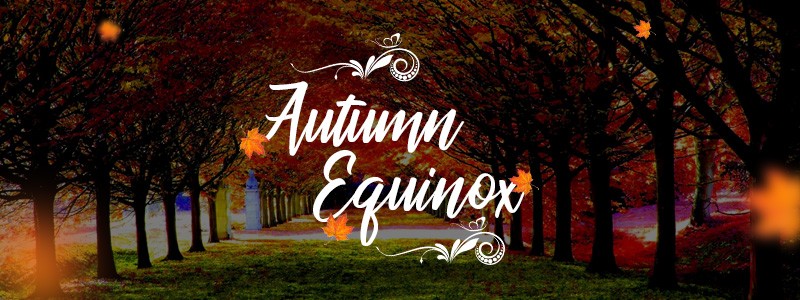
The temperature is dropping faster than ever, days are getting shorter than earlier and the leaves are changing color faster. Well all this is a nature's way of signifying summer is drawing to a close. In the Northern Hemisphere, the moment in time when the Sun stands directly above the equator while crossing from the north to the south is called Autumnal Equinox otherwise referred as Fall Equinox, September Equinox or Southward Equinox. In the Northern Hemisphere (where nearly 90% of the world's population live) Autumn begins while in the Southern Hemisphere it is the vernal equinox also known as the Spring Equinox.

The word "Equinox" is derived from Latin which translates to "Equal Nights" since on the day of an equinox the people will experience day and night which are of approximately equal length all over the Northern Hemisphere. This phenomenon occurs as the Earth's rotational axis is neither tilted away from nor towards the Sun.

This year Autumn Equinox will fall on September 23, 2017 which will be a Saturday.

During the equinox, the Sun crosses what we call the “celestial equator” (the line that marks the equator on Earth) from north to south and where Earth’s two hemispheres are receiving the Sun’s rays about equally. Since the Sun is overhead at noon as seen from the equator, the amount of nighttime and daytime or sunlight are roughly equal to each other. From here on the temperatures begin to drop and the days start to get shorter than the nights, therefore signifying that the winter is round the corner.

Let us discuss the 10 facts that we need to know about the first day of fall:
1. Second Equinox of the Year, while the first equinox of the year, the March Equinox, takes place on or around March 21 every year.
2. Say Goodbye to Summer and start prepping for the winter.
3. Also Welcome Spring in the Southern Hemisphere.
4. A Specific Moment in Time since Equinoxes are not day-long events, which will occur at 1:32 AM on Saturday, 23 September.
5. The Date Varies because of the difference between how the Gregorian calendar defines a year.
6. Equal Day and Night, which will be a boon to those sleepy heads....
7. ...But Not Quite, since most places on Earth enjoy more than 12 hours of daylight on this day.
8. Shorter Time Between Moonrises which is backed up by scientific reasons.
9. Prepare for Northern Lights or the aurora borealis.
10. Celebrated Around the World by holding feasts and celebrate festivals and holidays to mark the autumnal equinox.
Do let us know your views in the comments section below.
Stay tuned for the latest updates!
COPYRIGHT © 2017 RAUNKA.COM ALL RIGHTS RESERVED. All written work on this site is property of Raunka.com, unless otherwise stated. Unauthorized use and/or duplication is strictly prohibited. Excerpts and links may be used, provided that full and clear credits is given to Raunka.com.








